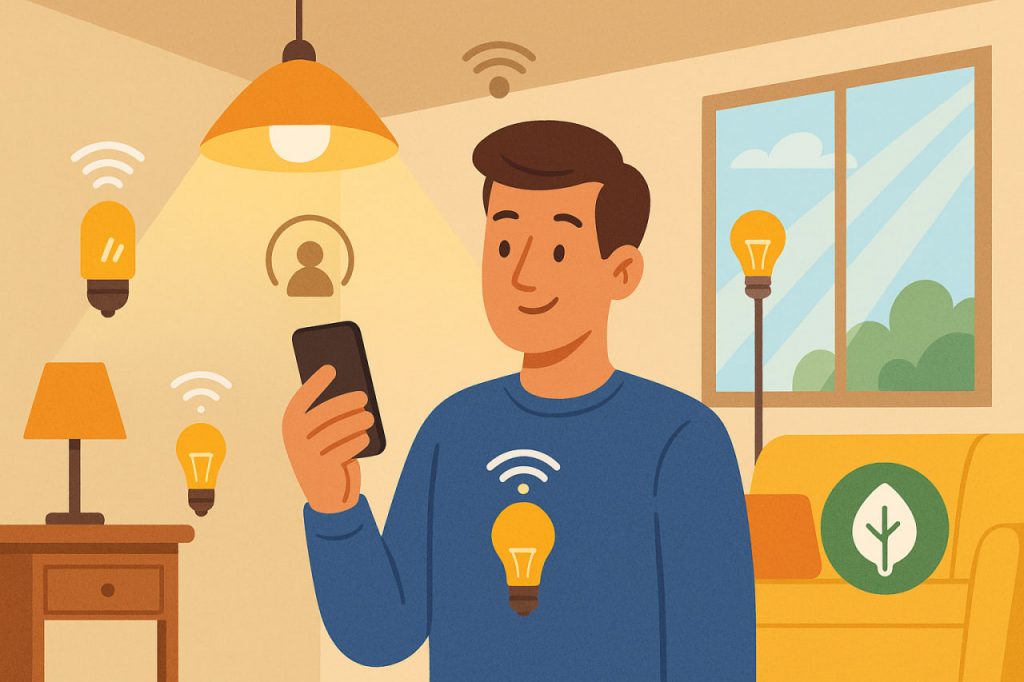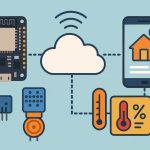Smart lighting systems are revolutionizing how homes, offices, and cities consume energy. Unlike traditional lighting, which remains static and user-dependent, smart systems adjust automatically to environmental conditions, user behavior, and occupancy. This not only enhances convenience and comfort but also contributes to significant energy savings and carbon emission reduction. By integrating sensors, automation, and remote control, smart lighting plays a key role in building sustainable infrastructure for the future.
Principles of Smart Lighting
At the core of any smart lighting system is the ability to adapt and respond dynamically. These systems use motion sensors, ambient light sensors, timers, and wireless communication modules to determine when and how much light is needed. Smart bulbs and fixtures can change brightness, color temperature, and even schedule operations based on user preferences or real-time input.
This adaptability allows lighting to follow circadian rhythms, reduce glare, and minimize unnecessary usage. Additionally, connectivity to mobile apps or voice assistants makes control effortless, increasing user engagement and fine-tuning.
Energy Consumption and Cost Reduction
Lighting accounts for a substantial portion of household and commercial electricity use. Traditional incandescent bulbs convert less than 10% of the electricity they consume into visible light—the rest becomes heat. LED bulbs, which dominate smart lighting, are far more energy-efficient and long-lasting.
When smart lighting is combined with automation and presence detection, users can reduce unnecessary lighting by up to 50–70%. For example, lights automatically turn off when a room is empty or adjust brightness based on the amount of natural daylight, leading to substantial electricity bill reductions over time.
Integration with Home and Building Automation
Smart lighting is often a component of broader home automation systems. It can be integrated with smart thermostats, security systems, and energy meters to create synchronized, energy-saving routines. For instance, a single scene can dim lights, lower blinds, and reduce HVAC settings when no one is home.
Building Management Systems (BMS) in commercial settings use smart lighting to optimize power use based on occupancy, time of day, and activity. This not only improves energy efficiency but also reduces operational costs and supports green building certifications like LEED and BREEAM.
Environmental and Sustainability Benefits
Energy-efficient lighting directly contributes to reducing greenhouse gas emissions, especially when replacing traditional incandescent or fluorescent systems. Because smart systems decrease demand on power grids, they support broader sustainability goals, particularly in urban planning and smart cities.
Materials used in LED smart bulbs are often more environmentally friendly, and their longer lifespan means fewer resources are consumed in manufacturing, shipping, and disposal. In combination, these factors make smart lighting a critical technology for environmental impact mitigation.
Challenges and Considerations
Despite its advantages, smart lighting faces several challenges. Initial installation costs can be higher than conventional lighting, particularly when retrofitting older buildings. Data privacy and network security are also concerns, as many smart systems are connected to Wi-Fi and collect usage data.
Compatibility between different brands and platforms may be limited, requiring users to invest in centralized smart hubs. However, ongoing improvements in standards such as Matter and Zigbee are reducing these limitations.
Conclusion
Smart lighting is more than a convenience—it’s a transformative approach to managing energy consumption responsibly. By combining sensors, automation, and efficient light sources, it enables users to reduce waste, save money, and contribute to environmental goals. As smart systems become more affordable and integrated, their role in global energy efficiency will only continue to grow.
Glossary
- Smart lighting — lighting systems that adapt to user behavior, time, and ambient conditions automatically.
- LED (Light Emitting Diode) — a highly efficient, long-lasting light source.
- Home automation — the use of smart devices to control household systems remotely or automatically.
- Occupancy sensor — a device that detects human presence in a room to control lighting or HVAC.
- Building Management System (BMS) — software and hardware used to control energy and lighting in large facilities.
- Matter — an emerging open-source standard for smart home device compatibility.
- Energy efficiency — using less energy to provide the same service or performance.


